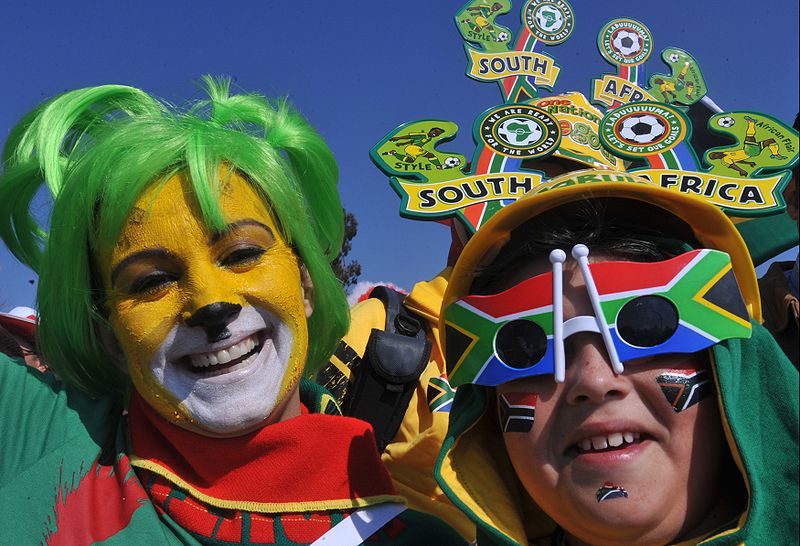World Cup Flags Waving over Cuba
Dmitri Prieto

The Cuban flag is not in the Soccer World Cup, but the flags of that competition are in Cuba.
Today I was passing by the Yara Cinema, the most central theater in Havana, where I witnessed a crowd of young people, most of them wearing Brazilian T-shirts and waving the flag of that country. Some even carried the long, blaring “vuvuzela” horns (homemade? brought from China?). Having seen the images of the South African games on TV, I can’t imagine the racket of vuvuzelas inside a cinema.
The situation was that Yara is projecting the World Cup competitions on the big screen – and live! This was a practice that began —to the best of people’s recollections— at the Center for Genetic Engineering and Biotechnology. In that complex’s theater, the key games of the 1998 French team were shown to the center’s employees (and during working hours!). Among these showings was the memorable final in which no one to this day understands how Brazil was able to lose to the French team.
I have two European friends who hate soccer. It’s not exactly because of the violence (one of them used to play rugby and the other one practiced Thai kickboxing), but for the mixture of patriotism with populism and sexism, a perverse mix in which waving one’s national flag is an indispensable part.
One of them (a German) regrets that with the 2006 championships she wholeheartedly recovered the Germanic love for her tri-colored cloth, after decades of anti-authoritarian and critical attitudes by her own people in the Federal Republic against any sort of Teutonic nationalism.
Complex suppositions induced in Germans by the two World Wars were left behind by virtue of the World Cup.
In Cuba, people tend not to wave the flags of other countries openly, but since the Cuban soccer team isn’t playing in the world games, a multicolored euphoria has been stimulated in which the banners of other countries occupy a key place.
Brought from abroad by friends or an occasional tourist, the flags have become status symbols, along with expensive team T-shirts, which are increasingly seen on the island, in addition to the vuvuzelas. The differences in incomes and access are now visible.
Cars —many of them owned by foreigners— display the flags of the preferred footballer powers, and even draped from some houses and the balconies of buildings appear the national emblems of overseas nations. Brazil, Germany and Argentina are the most frequent.
On TV appeared the president of the Municipal Assembly of Bauta (a town in Havana Province located a few miles from the capital) explaining how now it is now a tradition for the residents there to hoist flags over their homes.
This is a town that looks like a diplomatic city with the particularity that each country has not one but several embassies. In the community video hall in the village, one cannot but notice the racket of football fans as they display all the customary attributes of going to a large stadium, but with everyone seated in front of a small television screen.
A great effect of Cuba’s “opening up to the World Cup” over the last few years is that it’s no longer possible in Cuba to have that legendary phone conversation that occurred in 1998 between a concerned citizen and a police officer at the station:
“Officer, good afternoon. Some people have hoisted a dissident flag in front of my house,” reported the citizen.
“And how do you know comrade that it’s a dissident flag?” asked the policeman.
“Because it’s green and yellow, and with a counter-revolutionary slogan…something like “Order and Progress.”
“That’s the Brazilian flag, imbecile! It’s for the Soccer World Cup!”






Comments are closed.